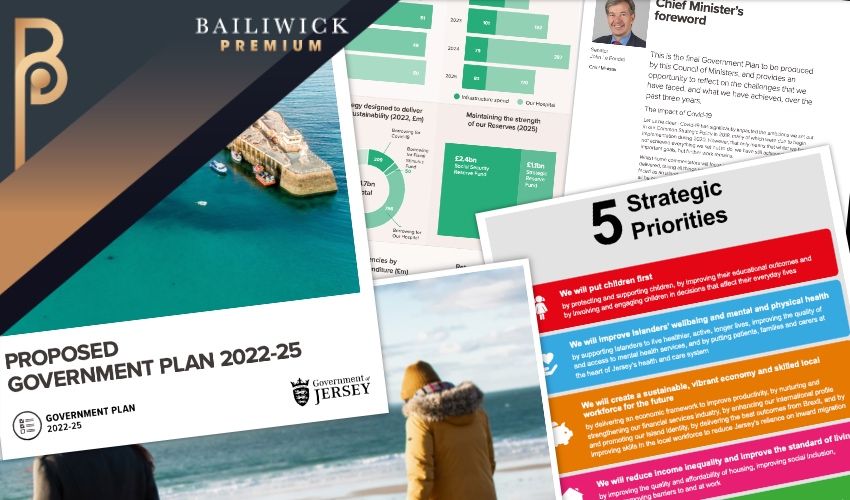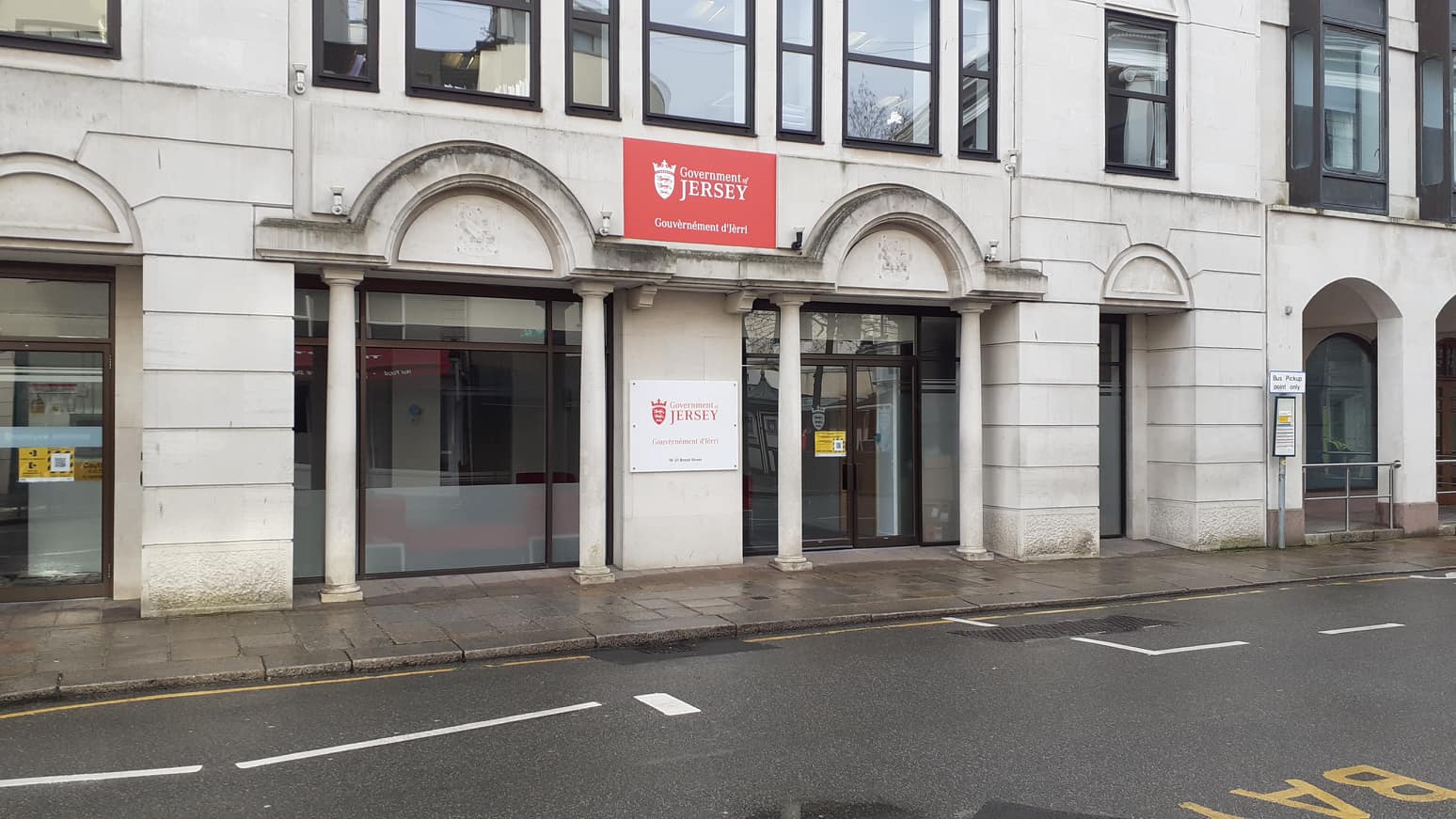


The Government might have reaffirmed its desire to make savings in the latest version of the Government Plan - but a deep dive by Express has shown that the overall staff headcount is set to increase by nearly 200 people.
So this latest plan – which still has to be approved by the States Assembly – covers firm spending plans for 2022 and then approximates for 2023, 2024 and 2025, although known recurring costs, such as ongoing projects and fixed repayments, will be more likely to stick.
However, with a potential change in leadership in June next year, it is possible that next year’s Government Plan, covering 2023-26, will look very different.
So, what is new in this year’s Government Plan, and how do the estimates for 2022 in last year’s plan, which covered 2022-24, compare to the actual figures in this year’s edition?
Firstly, the context of last year’s plan is key: the world was in the middle of a pandemic and previous spending priorities and pride in a healthy balance sheet quickly evaporated, as the cost of Covid mounted.

Pictured: The latest plan puts the total cost of covid's impact at £600m.
The latest plan puts the total cost of Covid’s impact at £600m, including a £469m bill for dealing with it – including the co-funded payroll scheme, testing, track and trace, and vaccination; the £50m Fiscal Stimulus Fund, and a predicted loss of income of £81m.
The 2022-25 plan is a lot more optimistic than last year’s, which predicted a loss of income of £395m. 12 months on, the public coiffeurs will be £314m better off, if the forecasts are right.
This optimism is reflected elsewhere in the ‘recovery and renewal’ plan, as ministers have branded it. Both last year and this year’s plan predict a deficit in 2022 - but in the 2021-24 plan the Government thought it would spend £180m more than it brought in as income; in this year’s plan, that figure is almost halved to £85.5m.
And while the previous plan forecast returning to a £13.3m surplus in 2023 and a similar surplus in 2024, in this year’s plan the surplus more than doubles in 2023, and then drops to £17.4m in 2024 as spending increases.
As mentioned, income forecasts are also greatly improved. The last plan predicted the Treasury would receive £863m in 2022 from income tax, GST and other revenues; however, this year’s plan puts that figure at £933m – an 8% increase.

Pictured: The Government plans to spend 12% more as part of the new plan compared to the old plan.
The Government also plans to spend more – departmental expenditure for 2022 in the 2021-24 plan was estimated to be £857.5m but in the 2022-25 plan, that figure is £961.6m – a 12% jump.
A new expenditure in the latest plan is funding the new hospital, if Members back the Government’s borrowing plans in a fortnight. Repaying the debt will cost £21m next year and £19m annually thereafter.
Additional expenditure in the plan includes:
- Young people ‘intensive support’ for those who are at significant risk, vulnerable, or who may pose a risk to others (£400,000 each year over the four years of the plan)
- Investment to fund a series of projects aimed at improving the health and social wellbeing of Islanders to enable a recovery from Covid-19 (£5m in 2022 and £3m in 2023)
- Money to reduce waiting list pressures caused by Covid by expanding capacity on a temporary basis (£1.3m in 2022)
- Buying PPE in case of future pandemic (£9.1m spread, and decreasing, over four years of plan)
- Warehousing PPE in case of future pandemic (£1.3m spread over four years of plan)
- Financial crime prevention (£1.8m a year over period of plan)
- Review of workers’ rights (£50,000 in 2022)
- Liquid waste processing (£250,000 each year over four years of plan)
- Increases in insurance premiums (£4.2m over the plan period)
- Increase in defence contribution to fund Jersey Field Squadron (rising from its current £1m to £1.54m by 2025.
- Encouraging voter turnout at next year’s elections (£100,000 in 2022)
- Increasing wages bill at Law Officers’ Department (extra £270,000 in 2022, rising to £414,000 by 2025)
- Extra £1.5m a year to operate new legal aid system, based on fixed fee payments to lawyers, from 2022.
- Paying the Bailiff and Deputy Bailiff more to bring them into line with equivalent roles in UK (an extra £75,000 a year from 2022).
There will be 7,294.4 FTE posts on the Government payroll in 2022. This compares with 7,113.2 FTE posts for 2021 in the last Government Plan - an increase of 181.2 FTE posts.
The size of the Infrastructure, Housing and Environment Department is set to increase, with the number of FTE posts rising from the last plan’s 599 to the latest plan’s 678.2 - an increase of 79.2 FTE posts (13.2%)

Pictured: The Government's IHE department is set to expand.
Health is more or less unchanged (2,430 FTE posts across last Government Plan compared to 2,453.5 FTE posts in latest plan – an increase of 23.3 FTE posts (1%).
Children, Young Persons, Education and Skills is also more or less ‘as you were’ with 1,961 FTE staff estimated in the 2021-24 plan for 2023 and 2024, and 1,956.3 FTE staff estimated for those years in this plan, a reduction of 4.7 roles.
Strategic Policy Planning and Performance’s 91 FTE posts are increasing to 95.2 FTE posts.
Not all departments are growing, however. The last Government Plan predicted that the Treasury would have 286 FTE posts by 2024 but this falls to 283 for the same year in the latest plan.
The Government plans to spend £125m on capital projects next year, excluding the new hospital project. The total non-hospital capital spend between 2022 and 2025 is £388m. Add the hospital – which will be funded by borrowing – that leaps to £1.1 billion over the four years.
New major projects being given money include the restoration of the old hospital and officers’ barracks on Elizabeth Castle (£4.9m in total), a new headquarters for the ambulance and fire services (£24.4m) and the third and fourth stages of the ‘Integrated Technology Solution’ project (£7.7m, including an additional £1.2m to add some modules to the project that were not included in the original plan.

Pictured: One new major project is the £4.9m restoration of the old hospital and officers’ barracks on Elizabeth Castle.
However, the £62.5m overall cost of the project – which caused alarm among backbenchers, as last year’s plan initially priced it at £30m – has not crept up.
The Government say the ITS project is ‘critical’ as it will replacement outdated procurement and asset-management systems.
When it comes to building, extending and upgrading schools, capital projects are now grouped together as ‘schools estate’; however, the plan does specify that major projects within that include the replacement of Victoria College Prep (£11m allocated over the four years of the plan), the redesign of Greenfields at Five Oaks (£7m) and the extension of Mont à l’Abbé to create a secondary school (£7.3m).
What the politicians say:
Chief Minister John Le Fondré: “At its core, the plan retains a focus on the commitments that have underpinned the work of Government and were established in our Common Strategic Policy in 2018: putting children first; improving Islanders wellbeing and mental and physical health, made even more pressing by the impact of Covid; creating a sustainable, vibrant economy; reducing income inequality and improving the standard of living; and protecting and valuing our environment.
“As well as focusing on these key matters, it addresses the other legacy issues that we inherited and have been the subject of significant focus and progress: the need for a new Hospital, the requirement to manage the Government estate and develop a new consolidated headquarters; the significant burden of historic pension debt; and long-overdue investment in IT and systems infrastructure.”
Treasury Minister Susie Pinel: “We will run our finances at a deficit until we begin to see recovery, with the intention of returning to balanced budgets over the period of this plan.
“We will also continue to invest in our public services and our Common Strategic Priorities through savings and efficiencies. Islanders can be assured that they will not see any severe cuts to spending or significant increases in taxes to cover the deficits.”
Comments
Comments on this story express the views of the commentator only, not Bailiwick Publishing. We are unable to guarantee the accuracy of any of those comments.